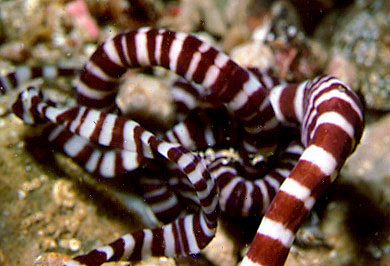Lesson 3: Phylum Nemertea: Ribbon Worms
 Ribbon worms appear to be very similar to flatworms. However, they have several features that indicate they are a more complex organism. They are the first of the organisms to have a complete digestive tract. This means that they have a mouth, a gut and an anus. They also have a circulatory system by which blood transports nutrients and oxygen to tissues.
Ribbon worms appear to be very similar to flatworms. However, they have several features that indicate they are a more complex organism. They are the first of the organisms to have a complete digestive tract. This means that they have a mouth, a gut and an anus. They also have a circulatory system by which blood transports nutrients and oxygen to tissues.
The most distinctive feature, however, is their proboscis. This is a long, fleshy tube used to capture prey. It pokes out of a cavity located above the mouth. The proboscis of some ribbon worms can reach well beyond the body of the worm. In one species the proboscis is as long as 30 meters! Ribbon worms are predators that feed on worms and crustaceans. There are some 900 species of ribbon worms and most are marine. They are found commonly in the shallow, temperate waters.
Photo: Basiodiscus mexicanus was photographed at Los Arcos, near Puerto Vallarta, Mexico; Wikipedia.org
Please watch the videos below to learn more about ribbon worms!


